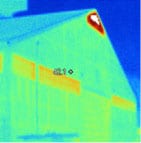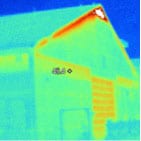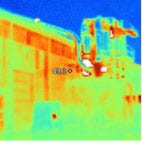Before spending money on improving the heating systems in the Factor IV buildings, shouldn’t we make sure the heat isn’t escaping the building first? It would be wasteful to heat a building full of holes. Sometimes the simple solution is the best option.
BCIT proposes to bring in an expert firm that has a special process to identify where heat is being lost and then repair the leaks. We will do the exercise as a pilot project to verify the savings in one building first. The new smart gas meters will be used to do the monitoring and verification.
If successful, the project will be replicated in all other Factor IV buildings. This will save heating costs with the existing heating equipment and make investing in new technologies a more valuable investment. This is another example of demand side management or reducing how much energy we use.
Energy conservation: potential for energy savings unknown at this stage of the project




All these images in the post are of the exteriors of building envelopes. In my experience although imaging the exterior of buildings can be instructive in identifying heat loss. It is often further removed from the source of the heat loss as air can move through various pathways from the inside to the exterior. I think including a thermal imaging assessment of buildings is a very instructive process that can significantly reduce the time it takes to identify areas where there is heat loss. But it needs to be paired with an interior scan of the buildings which is more time consuming, but will show the interior surfaces that are poorly insulated.
Also there is an opportunity to pair imaging with whole building depressurization to better identify air leakage pathways and building envelope air tightness which is also a significant contributor to heat loss.
This is a great idea, I hope you are able to bring it to fruition.
Good points!
All the buildings shown in the infrared images are 100% heated with natural gas based equipment and are all sub-metered at the building level. Our goal is to complete a pilot-project for one building looking only at building envelop repairs/improvements and to measure the real GJ saved. Your feedback will be very useful when planing the pilot.
Thanks again!
Alex